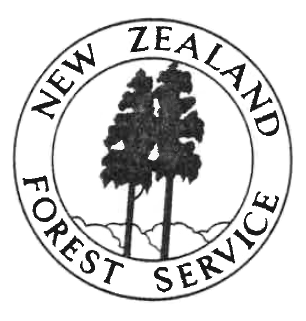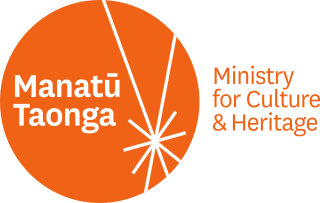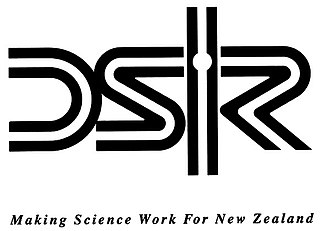Archives New Zealand is New Zealand's national archive and the official guardian of its public archives. As the government's recordkeeping authority, it administers the Public Records Act 2005 and promotes good information management throughout government.

Te Uru Rākau – New Zealand Forest Service is the agency within the Ministry for Primary Industries that is responsible for the New Zealand forestry sector. It is headquartered in Rotorua.
In New Zealand, Crown Research Institutes (CRIs) are corporatised Crown entities charged with conducting scientific research.

The Royal Society Te Apārangi is an independent, statutory not-for-profit body in New Zealand providing funding and policy advice in the fields of sciences and the humanities.
Claims and settlements under the Treaty of Waitangi have been a significant feature of New Zealand politics since the Treaty of Waitangi Act 1975 and the Waitangi Tribunal that was established by that act to hear claims. Successive governments have increasingly provided formal legal and political opportunity for Māori to seek redress for what are seen as breaches by the Crown of guarantees set out in the Treaty of Waitangi. While it has resulted in putting to rest a number of significant longstanding grievances, the process has been subject to criticisms including those who believe that the redress is insufficient to compensate for Māori losses. The settlements are typically seen as part of a broader Māori Renaissance.
Carter Holt Harvey Limited is a privately-owned New Zealand–based company controlled by Rank Group Limited, the corporate vehicle of the country's richest man, Graeme Hart. Based in Auckland, New Zealand, the company has three main divisions: Woodproducts New Zealand and Woodproducts Australia, which are both major Australasian manufacturers of wood-based building products; and Carters, a New Zealand chain of trade-focused building supply stores.
The Cawthron Institute is New Zealand's largest independent science organisation, specialising in science that supports the environment and development within primary industries. Cawthron has its main facilities in Nelson. It works with regional councils, government departments, major industries, private companies, and other research organisations throughout New Zealand and around the world. Cawthron employs approximately 300 scientists, laboratory technicians, researchers and specialist staff from 26 countries. It has both chemistry and microbiology labs, and has a major focus on food related testing for food safety and export certification. Cawthron holds IANZ accreditation for a wide range of tests. Its scientists include experts in aquaculture, marine and freshwater resources, food safety and quality, algal technologies, biosecurity and analytical testing.
Ngāti Whare is a Māori iwi of New Zealand. It is part of a group of tribes participating in the "treelords" Treaty of Waitangi settlement with the New Zealand government involving Central North Island forestry land and cash.

The Ministry for Culture and Heritage is the department of the New Zealand Government responsible for supporting the arts, culture, built heritage, sport and recreation, and broadcasting sectors in New Zealand and advising government on such.
AgResearch Ltd is one of New Zealand's largest Crown Research Institutes with over 700 staff and revenue of NZ$160.7 million in the year to June 2014.
Landcorp Farming Limited ("Landcorp") is a state-owned enterprise of the New Zealand government. Its brand name is Pāmu, the Te Reo Māori word 'to farm'. Its core business is pastoral farming including dairy, sheep, beef and deer, as well as a Foods business marketing milk and meat products globally under the Pāmu brand and as a supplier to other food processors. Pāmu manages 117 properties carrying over 1 million stock units on 3366,3426 hectares of property under management.

In New Zealand, agriculture is the largest sector of the tradable economy. The country exported NZ$46.4 billion worth of agricultural products in the 12 months to June 2019, 79.6% of the country's total exported goods. The agriculture, forestry and fisheries sector directly contributed $12.653 billion of the national GDP in the 12 months to September 2020, and employed 143,000 people, 5.9% of New Zealand's workforce, as of the 2018 census.
Deforestation in New Zealand has been a contentious environmental issue in the past, but native forests now have legal protection, and are not allowed to be tampered with by humans.

The Department of Scientific and Industrial Research (DSIR) is a now-defunct government science agency in New Zealand, founded in 1926 and broken into Crown Research Institutes in 1992.

Forestry in New Zealand has a history starting with European settlement in the 19th century and is now an industry worth seven percent of annual revenue. Much of the original native forest cover was burnt off and logged, however forests have been extensively planted, predominantly with fast-growing cultivars of the Monterey Pine. Wood chips, whole logs, lumber and paper products are exported from New Zealand.

The Ministry of Business, Innovation and Employment is the public service department of New Zealand charged with "delivering policy, services, advice and regulation" which contribute to New Zealand's economic productivity and business growth.

New Zealand Soil Bureau was a division of the Department of Scientific and Industrial Research specializing in soil-related research and development. Originally formed as the 'soil survey group' of the 'Geological Survey,' they became the 'Soil Survey Division' in 1936 and 'Soil Bureau' in 1945. Established adjacent to Taita College on approximately 90 acres on the Eastern Hills of Lower Hutt north of Wellington, the foyer featured a large mural by Ernest Mervyn Taylor depicting a cloaked figure using a kō. Soil Bureau completed nationwide soil surveys of New Zealand.
The New Zealand Māori Council is a body that represents and consults the Māori people of New Zealand. As one of the oldest Māori representative groups, the council exerts pressure on New Zealand governments to protect Treaty of Waitangi rights.








